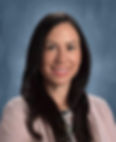Why Teaching Astronomy is Crucial to Elementary STEM Education
- Anna Paolucci
- Jan 18, 2023
- 2 min read
Educator Nicollette LeTellier inspires young learners with her use of Slooh’s online telescope

Elementary school teacher and STEM specialist, Nicollette LeTellier believes it is crucial to introduce space education into the STEM curriculum for students at a young age. She focuses on teaching her students space concepts in a way that engages them in hands-on and interactive learning. When it comes to elementary learners, finding a way to make STEM as hands-on and visual as possible is crucial to both their understanding and interest. Nicollette says, “as an elementary school STEM teacher, I am always searching for new ways to introduce real-world science that is both relevant and exciting for my K-5 students. It is important to inspire students’ passion and curiosity of space in an interactive way.” Nicollette has turned to Slooh’s online telescope and elementary curriculum to do so.
Nicollette explains how using Slooh “has enriched my space teaching while introducing students to important astronomy concepts. The online telescopes enable students to explore and analyze more than 1,000 real-world space objects and events right from their own computers. Students even have the opportunity to control the network of professional-grade online telescopes, just like real astronomers, as well as engage in gamified learning by earning points as they complete various quests focused on astronomy-based topics.” For students as young as elementary children, especially the ones who say they want to be an astronaut when they grow up, it is inspiring and exciting for them to look up into live space and control a telescope like an astronomer would.
Nicollete discusses how Slooh gives students of all ages and levels the opportunity to explore. She says, “I’ve used the online telescopes extensively with more than a hundred 4th and 5th grade students in our school’s astronomy club. Students of all academic levels can utilize the technology to explore and analyze specific objects in space that interest them, as well as dig deeper into learning about different aspects of astronomy. To make the learning experience more interdisciplinary, I’ll often integrate art, photography, science fiction reading/writing, mathematical concepts, and cultural stories with the space lessons to provide students with a true STEAM experience.” Slooh’s curriculum makes way for creative adaptations and projects for teachers to add on, as Nicollette demonstrates above.
In conclusion, Nicollete reflects saying, “for me, I love finding new ways to motivate my students through science teaching. I want them to always think about how we all can contribute to making our world a better place. I want them to consider careers in STEM fields. I want them to become future leaders and dreamers who will take care of our planet. I know that teaching about space is one important way to make all of this a reality.” Slooh is excited about how Nicollette has implemented the curriculum into her classroom, and we look forward to seeing how Slooh can continue to inspire young learners’ curiosities about Astronomy.
Nicollette LeTellier is a S.T.E.M. Specialist for Swift Water Elementary School in Gig Harbor, Washington. She has been teaching for ten years, and she taught 1st and 3rd grade for five years in Vicenza Italy, with the Department of Defense before moving to Washington state. She has two daughters who enjoy learning astronomy along with her.